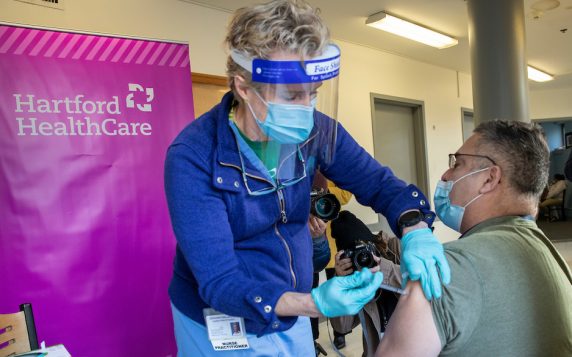If you’ve been infected with Omicron, it’s unlikely you’ll get infected again with the subvariant known as Stealth Omicron, based on new information from Statens Serum Institut, Denmark’s top infectious disease research authority.
A study identified only 1,739 patients out of more than 1.8 million COVID-19 cases between Nov. 21 and Feb. 11 who tested positive twice between 20 and 60 days apart. The reinfections, which affected mostly the young and unvaccinated, produced mild symptoms. (Yet dozens of new reinfections have been reported in Denmark this week.)
The Omicron subvariant (BA.2) has replaced the original (BA.1) as the dominant strain in Denmark, accounting for more than 88 percent of cases. BA.2 cases are increasing in the United Kingdom, Norway and South Africa. The subvariant has been found in at least 80 countries, according to tracking data from the virus genome reporting tool GISAID. In the United States, the subvariant has been identified in 48 states, including Connecticut. Modeling by the Centers for Disease Control and Prevention points to BA.2 accounting for about 3.8 percent of sequenced cases in the U.S. from Feb. 13-19.
In a previous Danish study, researchers found BA.2 differed from BA.1 by about 40 mutations.
“The BA.2 is maybe slightly more contagious,” says Dr. Ulysses Wu, Hartford HealthCare’s System Director of Infection Disease and Chief Epidemiologist, “but it’s still Omicron by nature. And we always knew Omicron by nature was going to slow our recovery.”
The Danish researchers found within a smaller sample group 47 cases of a BA.2 reinfection shortly after a BA.1 infection. They detected less viral material in the second infection, suggesting some level of immunity developed from the first infection.
“The emphasis really should be placed on getting boosted at this point,” says Wu, “because the studies are clearly showing that this is your protection — not necessarily just against getting Omicron, but its main purpose is preventing severe hospitalizations.”



